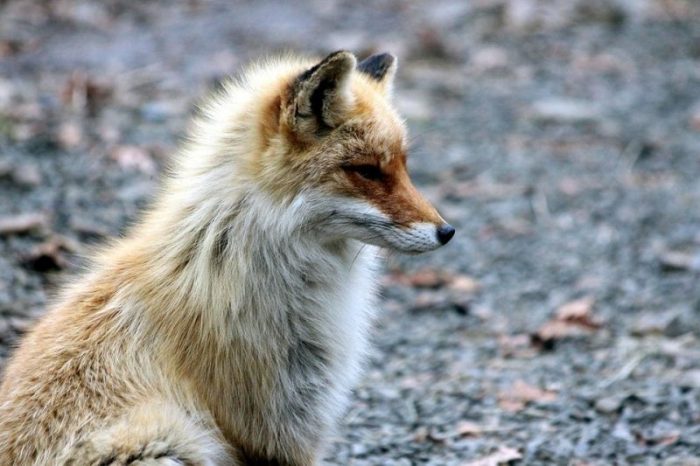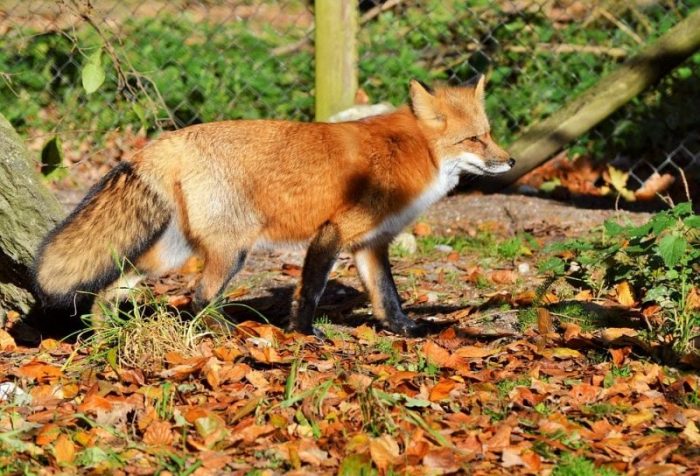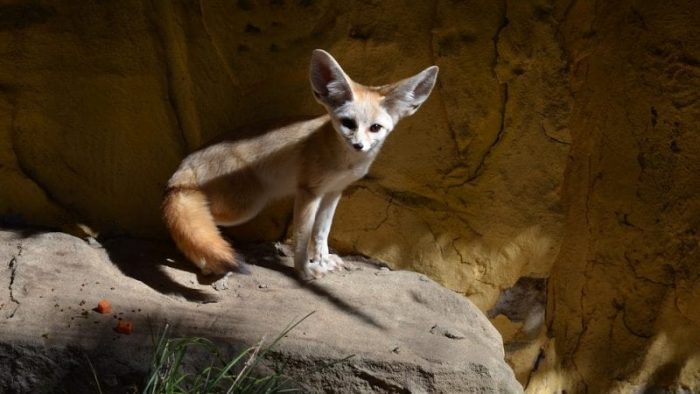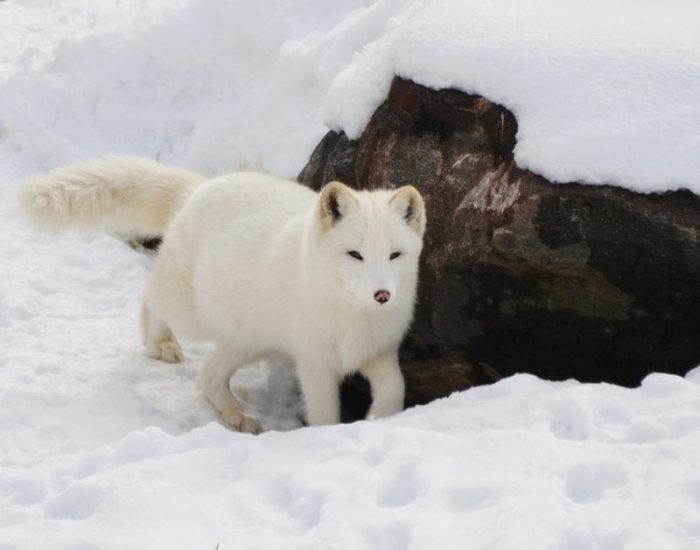
Foxes eat a diverse diet as omnivores, focusing on small animals such as birds, rabbits, rodents, frogs, mice, insects, and fish. Foxes are also known to eat fruits and vegetables including berries, seeds, and fungi.
Foxes are one of the prolific types of mammals in the world, living on every continent except Antarctica. Foxes are omnivorous, meaning that they eat both meat and plants. Answering the question “What kind of food do foxes eat?” is more difficult than you would think because foxes eat many different things. The different types of foxes that live in different regions around the world all subsist on a variety of meals, from berries to mice.
In order to get a firm idea of the various types of food that foxes eat, it would be helpful to be better acquainted with foxes themselves.
Foxes: Species And Behaviors
Foxes are all members of the Canidae family, but the fox family consists of a wide variety of different genera and species. The most widely known foxes, the type of fox people usually think of when they hear the word “fox,” are members of the Vulpes, Urocyon, and Lycalopex genera. The Vulpes genus includes Arctic Foxes, Bengal Foxes, Fennec Foxes, and Red Foxes. The Urocyon genus contains the Gray Fox, while the Lycalopex genus contains the Pampas Fox, Darwin’s Fox and the South American Gray Fox. Other species of fox include the Bat-Eared Fox (genus Otocyon) and the Ethiopian Wolf (AKA Simien Fox, genus Canis).
The various species of foxes have different behaviors, reproductive cycles, and of course diets. While most foxes are pack animals, not all are. Most foxes live in small family groups, but some species of foxes, like the Arctic Fox, are known to be more solitary. Foxes are prolific and generally not-endangered, though some species of foxes like Darwin’s Fox, which lives in Chile, as well as the Island Fox, which live in the California Channel Islands, are threatened or endangered.
| Fox | Interesting Facts |
| Claws | Can retract similar to cats |
| Female fox name | Vixen |
| Group | Called a skulk or leash |
| Home | Foxes dig underground to make dens for safety |
| Hunters | Foxes hunt alone, unlike wolves who hunt in packs |
| Male fox name | Dog fox |
| Most common type | Red fox |
| Similarity | Foxes are more similar to cats than they are to wolves |
The General Diet Of Foxes
As mentioned above, foxes are omnivorous. This means they can eat a large variety of different foods including different types of wild grasses, mushrooms, berries, fruit, and grain. In terms of fruit, foxes seem to enjoy eating wild apples and blueberries in particular. However, while foxes can eat plants, there are mainly carnivorous and thus most of their diet consists of small animals. Foxes feed on things like mice, birds, voles, eggs, and amphibians. Snakes, hairs, and mice are a favored meals for foxes, while birds are consumed less often as they are more difficult to catch.
“The sleeping fox catches no poultry.” — Benjamin Franklin
Foxes like to eat meat first and foremost, but if they cannot find the approximately half a kilogram of meat they need to consume every day, they can compensate for that with other types of food. Foxes are extremely opportunistic creatures, and as such, they will eat just about anything they can get they can find. Foxes will scavenge meet, including scraps of meat left behind by larger predators. They will even scavenge any food that humans leave lying around.
Gray Fox

Photo: zoosnow via Pixabay
The gray fox can be found throughout most of the United States as well as Central America. They eat small mammals primarily, like most foxes do, including squirrels and cottontail rabbits. When insects are plentiful during the summer, they play a large part in the gray fox’s diet. They will also eat corn, nuts, and grain.
Red Fox
Red foxes can be found throughout most of the United States and Canada, as well as throughout Europe, parts of the Middle East, and most of Asia including China and Japan. Though not native to Australia, they were introduced to there, and as such, can be found throughout much of Australia as well.

Photo: Capri233auto via Pixabay
The red fox subsists on small mammals like squirrels and mice, yet a large part of the red fox’s diet consists of invertebrates. Red foxes are known to eat insects like crickets, grasshoppers, and beetles. They will even eat crayfish. Red foxes will store surplus food under piles of leaves, bury them in the ground, or hide them in snowpacks.
Pampas Fox
The pampas fox lives in South America and can be found in parts of Argentina, Bolivia, Brazil, and Uruguay. It can be found in forests, as well as wetlands. The fox likes to eat birds and small mammals, but thanks to the fact that they live near wetlands they also subsist in large part on small amphibians and reptiles like frogs and lizards. They will also eat sugar cane stocks and wild fruit.
Fennec Fox

Photo: lonewolf6732 via Pixabay
The fennec fox is a small fox that lives primarily in the Sahara desert in North Africa. This desert-dwelling fox has large ears to increase its surface area, which helps dissipate heat. It is nocturnal, and thanks to this it has become adept at hunting animals at night. Much like other species of foxes, the fennec fox eats small mammals. Their large ears help them track burrowing animals like rodents and lizards. They also eat the roots of plants, eggs, and desert fruit. Fennec foxes have adapted the ability to go for long periods of time without water.
Arctic Fox

Photo: Diapicard via Pixabay
The arctic fox can be found in Alaska, Canada, Russia, Scandinavia, Norway, and Greenland. The arctic fox is the only native land mammal in Iceland. The arctic fox sports a white coat which enabled it to blend into the snow, but only during the winter. During the summer, the foxes coat turns gray and brown, helping it blend into the rocks and dirt of the tundra.
Arctic foxes eat small mammals like voles, lemmings, hairs, and birds. The fox’s large ears enable them to hear animals moving around the snow, and they will either dig up the animal or jump high into the air and come down to break through the snow. During the spring and summer, Arctic foxes will eat berries, nuts, and wild fruit. Arctic foxes sometimes follow polar bears around and scavenge the meat left behind by their kills. Extra food is often buried under the snow and saved for later.
Urban Foxes
As humans have come to dominate much of the globe, wild foxes have learned to live around human society and scavenge for food left by humans. Foxes will occasionally dig through trash cans or garbage bags to eat food scraps, but they are just as frequently fed by people. Foxes occasionally eat small pets, like rabbits or chickens, though this is fairly rare as a fox prefers eating easily scavenged food to the difficulty of hunting down an animal, even a domesticated animal.
Though foxes are primarily carnivores, they also eat a wide variety of fruits and grains. Ultimately, foxes are opportunistic omnivores, taking advantage of anything in their environment that they can find and that their talents allow them to eat.









